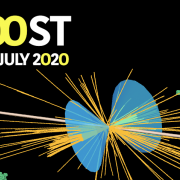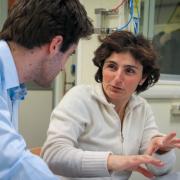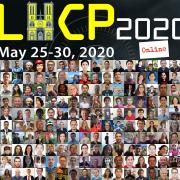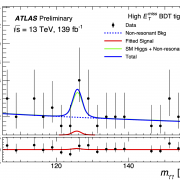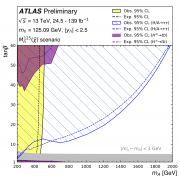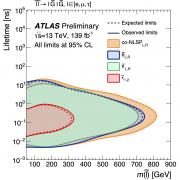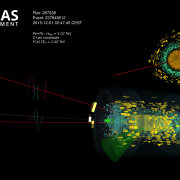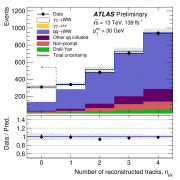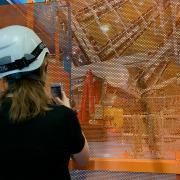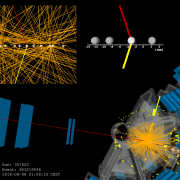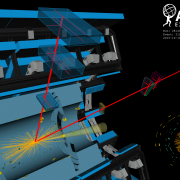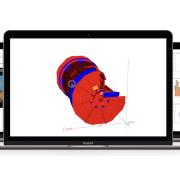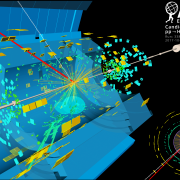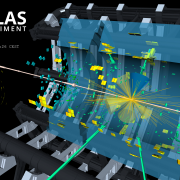Access to Collaboration Site and Physics Results
Updates tagged: “W boson”
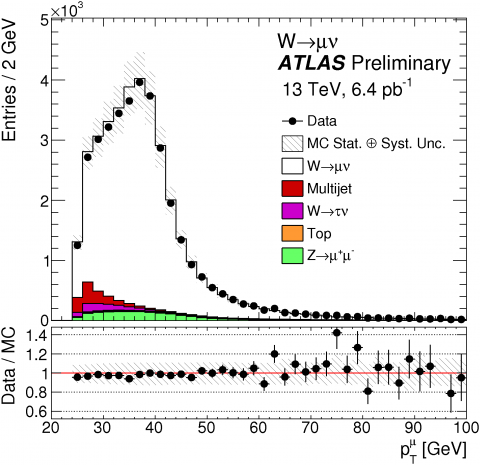
Of mesons and bosons
ATLAS is ready for detailed physics studies. The experiment used early data collected from the LHC’s Run 2 to calibrate its detectors. Measurements of the production and leptonic decay of certain particle resonances have shown that the detectors and software are working as expected.
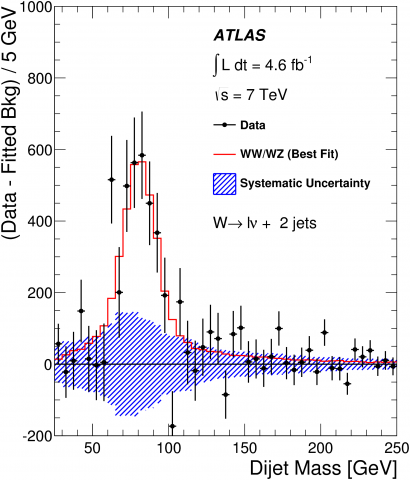
The Art of Rediscovery
When I tell people I’m a particle physicist, one of the most frequent questions I get asked is: “So, have you discovered anything?” Funnily, I’ve spent much of the past two years trying to rediscover something that’s already been seen before. In today’s world, which fetishizes the New, this may seem slightly lame, but just because we’ve discovered something, doesn’t mean we’ve fully understood it.
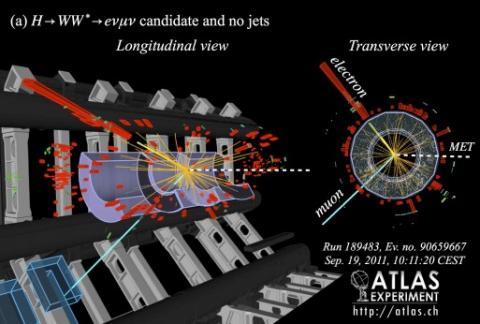
New ATLAS precision measurements of the Higgs boson: Observation of WW decay
The Standard Model makes many different predictions regarding the production and decay properties of the Higgs boson, most of which can be tested at the Large Hadron Collider (LHC). Since the discovery, experimentalists from the ATLAS collaboration have analysed the complete dataset recorded in 2011 and 2012, have improved the calibration of the detector, and have increased substantially the sensitivity of their analyses.
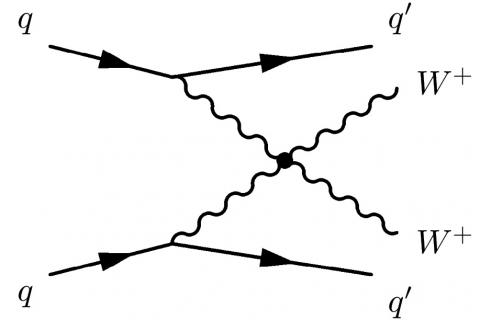
ATLAS finds evidence for the rare electroweak W±W± production
The Standard Model of particle physics has been extremely successful in predicting a vast variety of phenomena – so successful, that it is easy to forget that some of its predictions have not yet been verified. A very important one, related intimately to electroweak symmetry breaking, is that the gauge bosons (γ, W and Z) can interact with each other through quartic interactions.
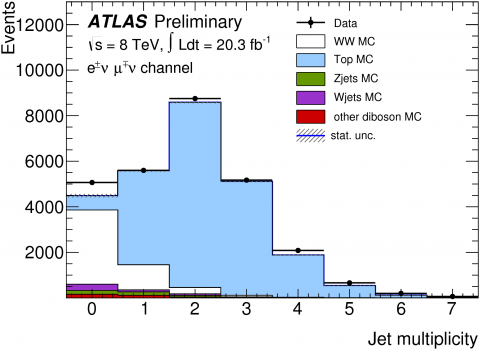
The WW cross-section: a high flyer
The production of pairs of heavy bosons, such as two Z bosons, a Z and a W boson, or the more challenging pair of W bosons (WW), are processes that particle physicists are passionate about because they cover a rich spectrum of phenomena. The WW channel, in particular, represents a substantial experimental challenge. In the events considered for this measurement, each W boson decays into an electron or a muon plus a neutrino that remains undetected and is reconstructed through the presence of missing energy in the event.
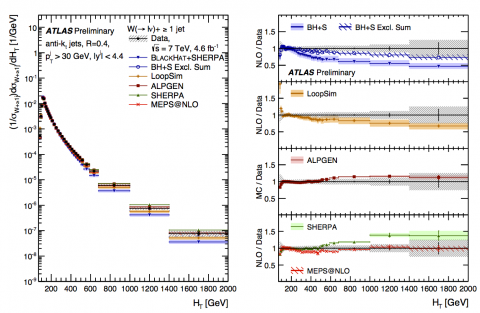
The production of W bosons in association with jets
The production of a W boson in association with “jets” of particles initiated by quarks or gluons (“W+jets” events) is an important signature to test quantum chromodynamics, the theory of strong interactions. A new measurement reported by ATLAS focuses on studying the properties of the jets in a large data sample of W+jets events.
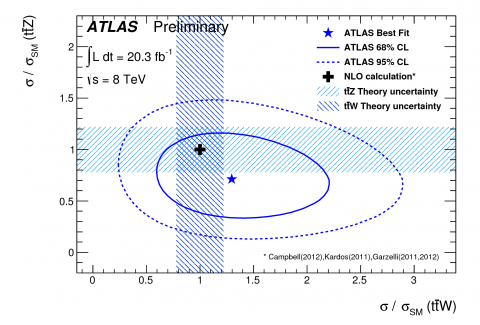
New evidence for top quark pairs produced with W or Z bosons
Evidence for the production of a W or Z boson together with a top quark pair, referred to as tt̄W and tt̄Z processes, has been found in the ATLAS analysis of the 8 TeV data from the LHC’s first run.
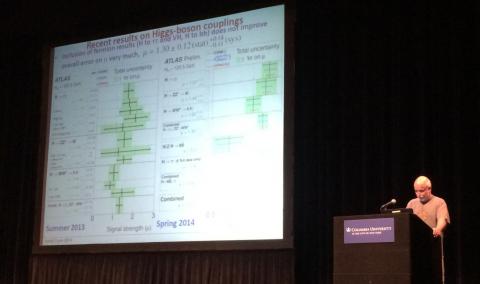
Higgs Mass to String Balls
ATLAS presented new results at the Large Hadron Collider Physics (LHCP) Conference in Columbia University, New York, 2 to 7 June. Many new searches and improved measurements were presented, among which were an updated Higgs boson mass measurement, a search for double Higgs boson production and new searches for Supersymmetry and exotic phenomena.

Unread section opened in the Standard Model book
While others are worrying that new physics might be running out of corners (see Eve Le Ménédeu's blog) we should not forget that even within the book of the Standard Model there are completely unread chapters. The Standard Model draws its success from the fascinating fact that its basic energy density formula, called Lagrangian, is uniquely defined by just specifying three fundamental symmetries.
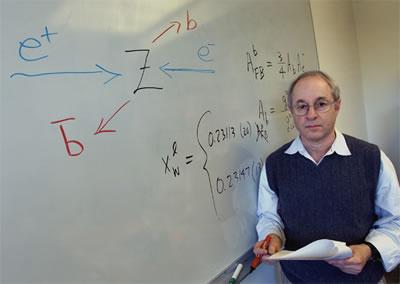
What if there is no Higgs boson?
Physicists are confident they will soon be able to answer a fundamental question at the LHC: how do particles acquire mass? The simplest answer, the one given in the Standard Model of the fundamental particles, is that a single particle, the Higgs boson, endows the other particles and itself with mass. The Higgs boson does this by means of the "Higgs mechanism", which involves breaking a symmetry that would leave all Standard Model particles massless if it were not broken. However the Higgs boson is not the only way the Higgs mechanism might work.




